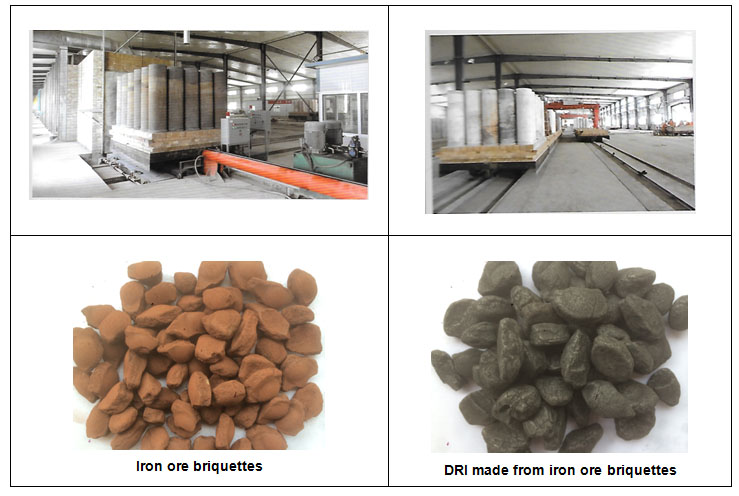Reduction of iron ore briquettes into DRI in the tunnel kiln process
GoodRich offers third generation tunnel kiln process from China, to convert soft iron ore lumps or briquetted iron ore fines into Direct Reduced Iron (DRI).
DRI or sponge iron is a high-quality metallic product and used as a feed-stock in the induction furnace / electric arc furnace.
The investments on the tunnel kiln plants are 20-25% lower than the Indian rotary kiln plants. The cost of production is also 20-25% lower. Use of coal gas in place of coal makes the tunnel kiln project environmentally clean and safe.
Both hematite and magnetite ores can be used in the tunnel kiln. The process is more suitable for soft ores, such as blue dust. The tunnel kiln process can reach higher metallisation levels of 90-92%, as compared to 86-88% in the rotary kiln.

The first generation tunnel kilns used clay crucibles and the capacities were 10,000-25,000 tons per year. The DRI was in the ‘pipe’ shape. The second generation tunnel kilns used silicon carbide crucibles and the DRI was in the ‘block’ shape; the plant capacities were 30,000-50,000 tons per year.
In the third generation tunnel kilns, soft lumpy ores of 10-30 mm size or briquetted iron ores of 32 mm X 25 mm size can be used.
In the first and second generation tunnel kilns, iron ore & coal layers were separate. In the new design, iron ore lumps / briquettes and coal fines are mixed together and hence the reduction is faster.
The loading &unloading systems are also simple. The third generation tunnel kilns are available in capacities from 30,000-70,000 tons per year. For the same length & width of the kiln, the output has increased by 50-60% now.
The investment on 50,000 tons per year tunnel kiln project (2 kilns of 25,000 tons each) is Rs. 45 crores, while the investment on 140,000 tons per year project (2 kilns of 70,000 tons each) is Rs. 90 crores.
Since the tunnel kiln process can use soft iron ore lumps and also iron ore fines after briquetting, the raw material costs are lower and the pay back periods are less than 3 years.
